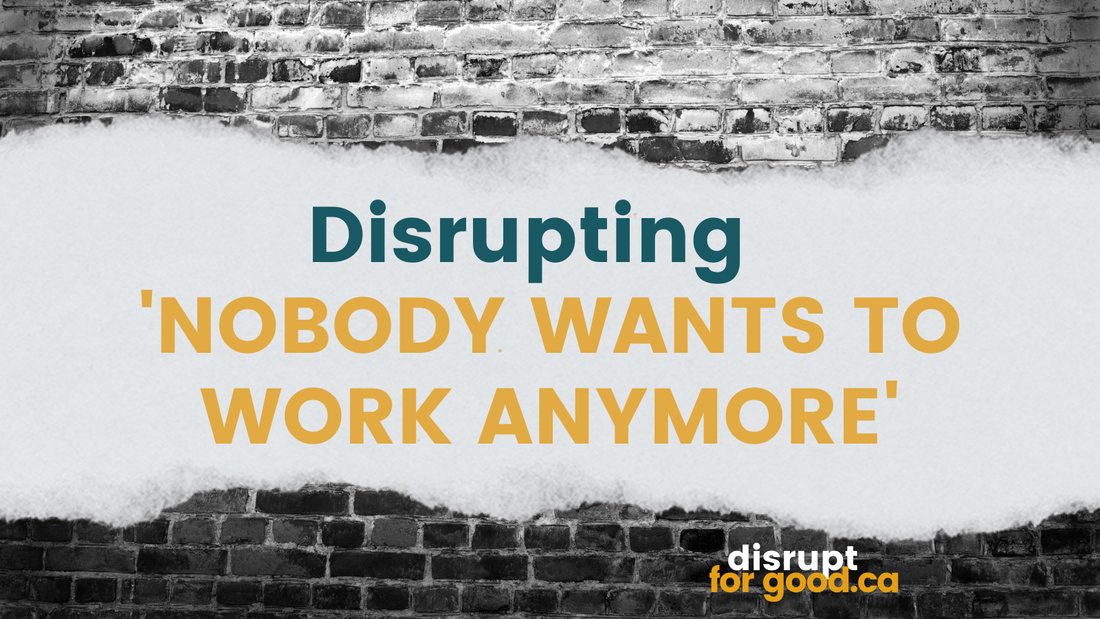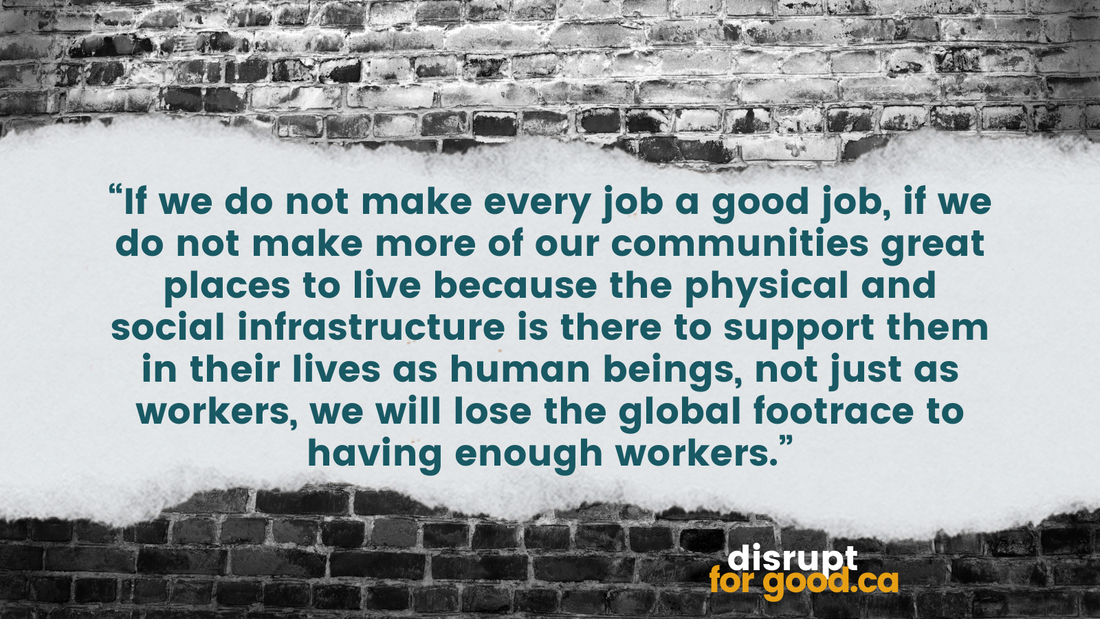|
“Nobody wants to work anymore.” You’ve heard it. You might have even said it. It’s a dominant narrative, from fed-up employers to grumpy waiting customers and everyone in between. But is it true? This was the topic of discussion on the Front Burner podcast’s August 24th episode: The Myth behind ‘nobody wants to work anymore.’ As host Jayme Poisson points out - yes job vacancies are high, but:
So why are there so many jobs without people to fill them? Economist Armine Yalnizyan says the data does not support the idea that Canadians are lazy and don’t want to work anymore. She says population aging, not laziness, is at the heart of this tight labour market. Fun bonus content: @paulisci’s Twitter thread, A Brief History of Nobody Wants to Work Anymore. (with newspaper clippings on teh topic stretching back to 1894) Yalnizyan notes that since the pandemic began, or over the last two years and a bit, almost 600,000 people have had their 65th birthday, that “mythical tripwire” to retirement. And the number of people entering the labour market to take their place has not kept up, meaning it will be extremely difficult to fill all the job openings unless demand shrinks. The pandemic also “messed with the labour market,” according to Yalnizyan, specifically in the “care economy” (PSWs, nurses, teachers, childcare), where we see an “extraordinary exodus” of women in the 55-64-year-old bracket. Men are also leaving, but fewer women are working, and in much larger numbers. Some theories on what is going on with the 55-64 year-old women:
Interesting aside, if a bit into the weeds: The pandemic is changing the composition of jobs, too. The average wage went up at the beginning of the pandemic when low-wage, non-essential jobs evaporated overnight, and as those jobs have been reintroduced, the average wage has gone back down. Yalnizyan distinguishes between two types of wage growth: paying people more to do the same job is inflationary wage growth, compared to non-inflationary growth with higher productivity when you have people moving into higher-paying jobs that match skills they have. (Think of a barista getting a raise vs. getting a new job in the field of study in which they hold a Master's degree.) Anyway, in some sectors, margins are thin, and employers do not have a lot of room to raise wages to attract workers. While some employers are not hiring because they cannot find people, some are not hiring because they cannot find people at the wages they are able (or willing) to pay. So far, we haven’t seen very much of that inflationary type of wage growth in the service industry jobs that employers are saying they can’t find people to fill. Yalnizyan says, “Every sector has a different story, but you could basically take the labour shortage story to every single sector and say ‘I can’t find enough people to do the work,’ and in parenthesis, ‘at the price I’m offering.’” Yalnizyan had some comments about the central bank’s efforts to tame inflation, too. She says that workers’ wages are not the cause of inflation, and that the central bank cannot tame inflation in food, or gas prices. It is taming inflation in housing prices by “jacking up” monthly carrying costs, but “that only affects a handful of people that have mortgages that are coming up for renewal. 37% of Canadian households rent, and renters are seeing enormous increases in rent prices, so he’s not doing anything about rents with his new rates.” Yalnizyan’s suggestion? “We could make every job a good job. We could make more opportunities for people who have been historically marginalized in the labour market to train and get better-paying jobs. We could actually improve the size and resilience of the middle class if that’s what we wanted to do. As the 9th largest economy in the world, Canada can be and do anything we set our hearts and minds to do.” She notes that the population aging labour shortage is global, and we will be competing with countries around the world to attract workers. “If we do not make every job a good job, if we do not make more of our communities great places to live because the physical and social infrastructure is there to support them in their lives as human beings, not just as workers, we will lose the global footrace to having enough workers.” “It’s not that people don’t want to work anymore, it’s that people can’t work anymore. They are working as hard as they can. Overtime is up and employment to population ratios are up for every age group. You have to value your workers now. Bargaining power has utterly shifted.” She concludes with an eloquent soliloquy that public policy is completely overlooking the need and the opportunity to make every job a good job with good wages and good working conditions, so that our social infrastructure is there when we need it. Without that, our economy will shrink. So how can we disrupt the “Nobody wants to work anymore” narrative?
Do you have anything to add? Any other suggestions for disrupting this negative narrative? Any thoughts about whether the economy not growing anymore is…maybe not the worst thing ever? Put it in the comments. I’d love to hear from you!
0 Comments
Leave a Reply. |
AuthorI'm Jennifer. I am an advocacy and communications strategist working with multiple charities and nonprofits. And I want to disrupt our sector for good. Archives
April 2024
Categories |



 RSS Feed
RSS Feed
